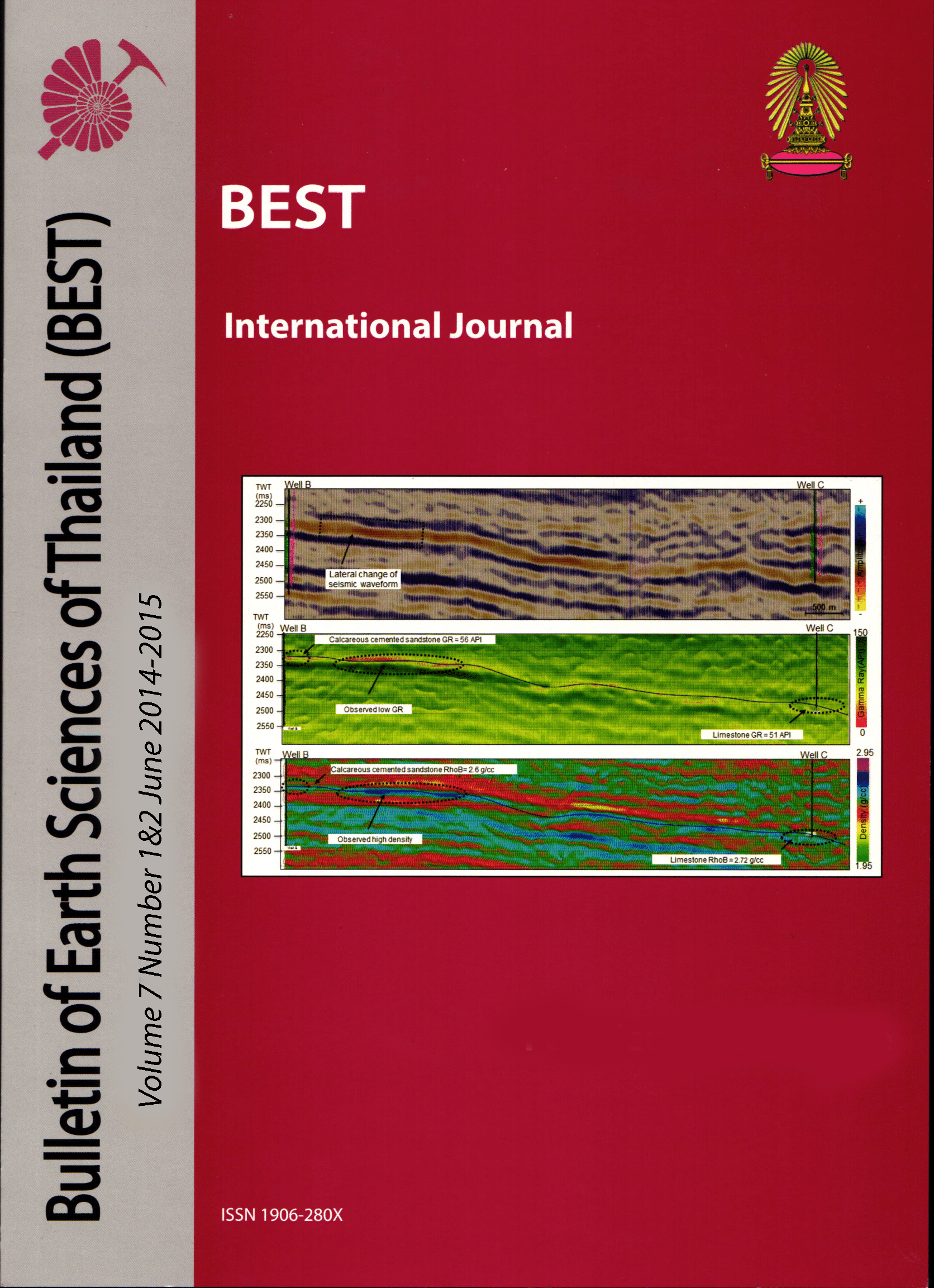APPLICATION OF SEISMIC ATTRIBUTES FOR RESERVOIR CHARACTERIZATION, SOUTH PATTANI BASIN, GULF OF THAILAND
Main Article Content
Abstract
Reservoirs of southern margin of Pattani Basin are mapped during company regular exploration evaluation but have not been looked into from a research oriented view. This study attempts to define the subsurface reservoir characters within Lower Miocene to Upper Miocene interval using 3D seismic attributes and well-log data. Reservoirs in this area are sometimes thin and have limited lateral extent which makes it difficult to predict the geometry and distribution of them. To predict sand character advanced imaging techniques such as : RMS (Root Mean Square) amplitudes, Spectral Decomposition and incoherency are used. At shallow stratigraphic levels, RMS volumes successfully resolved sand body geometries. But below 2000 meter due to a reduced acoustic impedance contrast between sand and shale RMS did not show distinctive images. On the other hand, using Spectral Decomposition CWT (Continuous Wavelet Transform) volumes can improve the image at deeper stratigraphic levels. It was also discovered that CWT outputs at 20 Hz can resolve thicker sands (>20m), while relatively thin beds and subtle features can be detected by higher frequencies. Therefore, these RMS and Spectral Decomposition imaging techniques were used jointly to examine the character of sands at different levels. Identified meander belts are N-S or NW-SE oriented and width of the belts vary from 200 m to 3 km. Based on the studied character of the sands they were divided into upper, middle and lower sand system. Upper sand system has well developed single meander belts in the above part and laterally migrated stacked sands at places in the lower part. Middle sand system shows more open marine influence as sands are distributed in a more scattered way with low sinuosity and as coal was observed in well logs. Lower sand system has thick stacked sands with moderate to low sinuosity and may have resulted from vertical aggregation of sands due to increased accommodation during syn-rifting.
Article Details

This work is licensed under a Creative Commons Attribution-NonCommercial-NoDerivatives 4.0 International License.
Copyright © 2008 Department of Geology, Faculty of Science, Chulalongkorn University. Parts of an article can be photocopied or reproduced without prior written permission from the author(s), but due acknowledgments should be stated or cited accordingly.
References
Ahmad, M.N., Rowell, P. & Suchada Sriburee (2014). Detection of fluvial sand systems using seismic attributes and continuous wavelet transform spectral decomposition: case study from the Gulf of Thailand. Mar Geophys Res (2014) 35:105–123.
Kolla, V., Posamentier, H. W., & Wood, L. J. (2007). Deep-water and fluvial sinuous channelsCharacteristics, similarities and dissimilarities, and modes of formation. Marine and Petroleum Geology, 24, 388-405.
Lambiase, J.J., D. Ramus and S. Husein (2010). Transgressive Successions of the Mahakam Delta Province, Indonesia: American Association of Petroleum Geologists Hegberg Conference, Variations in fluvialdeltaic and coastal reservoirs deposited in tropical environments, Jakarta. American Association of Petroleum Geologist Search and Discovery Article #90102.
Lockhart, B.E., Chinoroje, O., Enomoto, C.B., Hollomon, G.A., (1997). Early Tertiary deposition in the southern Pattani Trough, Gulf of Thailand. The International Conference on Stratigraphy and Tectonic Evolution of Southeast Asia and the South Pacific, Bangkok, Thailand, pp. 476–489.


